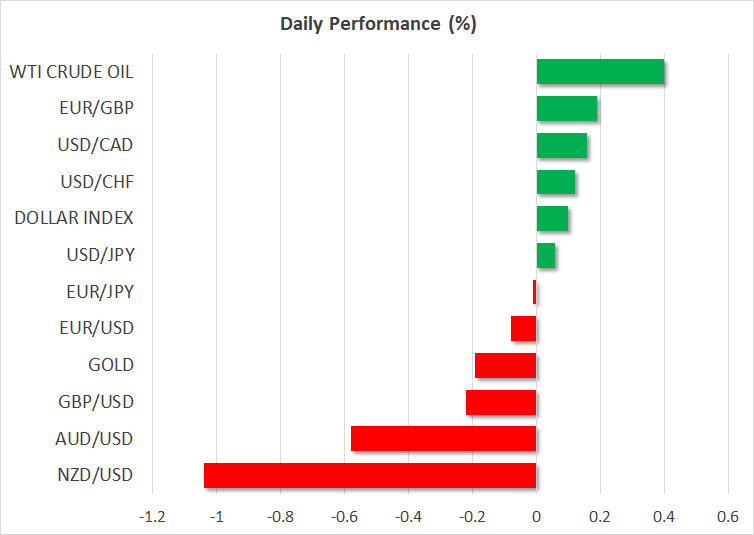- Euro rebounds as ECB officials appear in hawkish suits
- Yen extends slide, despite new intervention warnings
- Loonie and aussie slide on lower-than-expected CPI data
- Wall Street gains on upbeat US data

ECB hawkish rhetoric boosts the euro
The US dollar traded lower against most of the other major currencies on Tuesday, losing the most ground against the euro and gaining only against the Japanese yen and the Canadian dollar.
The euro rebounded strongly after ECB policymakers appeared at the central bank’s annual economic forum in their hawkish suits. Setting aside recession risks, most officials said they expect to raise rates again at both the July and September meetings, with President Lagarde noting that inflation has entered a new phase that could linger for some time. She also added that it is unlikely that in the near future they will be able to state with full confidence that interest rates have peaked.
This confirmed investors’ view that at least another 50bps worth of rate hikes will be delivered before the Bank takes the sidelines, while remarks by Governing Council member Martins Kazaks that bets of rate cuts in early 2024 are wrong prompted participants to push such bets back.
The ECB conference continues today, with more speakers on the agenda and the highlight perhaps being a panel discussion between ECB President Lagarde, Fed Chair Powell, BoE Governor Bailey, and BoJ Governor Ueda.
Conditional upon Lagarde reiterating her hawkish stance and Powell failing to convince the market that the Fed is likely to do more, the divergence in policy expectations between the ECB and the Fed is likely to continue benefiting euro/dollar for a while longer. However, the move that could signal the continuation of the pair’s prevailing uptrend may be a break above the 1.1095 resistance zone, marked by the highs of April 26 and May 3.
Yen defies intervention warnings, aussie and loonie slide as well
The Japanese yen continued to suffer, despite warnings by Japanese authorities that they could intervene to stem losses, and despite the Summary of Opinions of the latest BoJ gathering revealing that a member called for an early revision to their controversial yield curve control policy.
Intervention warnings were repeated today by Japan’s top currency diplomat Masato Kanda, who said “We are closely watching currency moves with a strong sense of urgency,” and yet the yen did not receive any boost. Perhaps traders are willing to continue selling the yen until dollar/yen hits the 145.00 zone, which is considered by many as the psychological zone, the break of which could trigger a new round of intervention.
The Canadian dollar lost ground as well yesterday after data showed that inflation in Canada eased to its lowest pace in two years. However, traders still believe that a 25bps hike in July is more likely than not, which may be the reason why the technical outlook of dollar/loonie has not changed much.
The Australian dollar tumbled to a three-week low today after monthly data revealed inflation slowed to a 13-month low in May, adding credence to the view that the RBA is unlikely to push the hike button in July.
Wall Street closes in the green on upbeat economic data
US equities rebounded on Tuesday, with the Dow Jones ending a six-day losing streak and the Nasdaq ready to lock its best first-half performance in 40 years. What encouraged investors to buy may have been upbeat data showing that new home sales surged in May and that consumer confidence rose to a one-and-a-half-year high in June.
Following the latest setback, the data may have given fund managers an opportunity for some window-dressing, which is the practice of adding outperforming assets to their portfolios as the quarter draws closer to its end.
Data soothing investors' worries about an imminent recession and expectations that the Fed may soon end its tightening crusade are a blend that encourages stock buying, and with the tech-sector dominating the recovery from the October lows, expectations of accelerating growth for tech firms in the quarters and years ahead could keep the uptrends intact for a while longer.
